The Mike Toole Show
Decades of Decadence
by Michael Toole,
It's the dead of winter here in Boston, which means that I've been spending a big chunk of my time indoors, mummified in blankets, nearly motionless, doing naught but eating desperately unhealthy comfort food and watching anime. It's just that kind of season, you understand. Along with watching new stuff (my current favorite: gdgd Fairies, a minimally animated, sometimes unscripted gag comedy - it doesn't always hit the mark, but when it does, it leaves an impact crater), I'm taking the opportunity to catch up on older shows that I didn't finish the first time around. One of ‘em is Wolf's Rain.
If I really applied myself (ha!), I could do an entire column about Wolf's Rain, BONES and Tensai Okamura and Keiko Nobumoto's post-apocalyptic tale of shape-shifting wolves in search of paradise. It's a complicated show that bucks both storytelling and visual conventions, but it still looks great today. The thing is, it turns ten years old this year. Realizing that got me thinking about the other anime that turn ten in 2013. And the ones that turn 20. And 30. And 40, and even 50, because that's just about how long we've had TV anime.
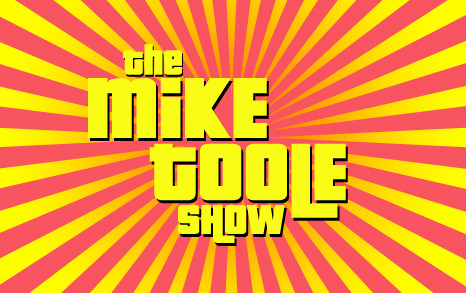
I'm not going to dwell on 1963, because let's face it, I've already done that. I will mention a couple of interesting things about shows from that year, though. First of all, ‘63 gave us Ken the Wolf Boy, Toei's first stab at a TV series that fused the adventuresome appeal of Tarzan with the funny talking animal hijinks of Huckleberry Hound, resulting in a show that also felt quite a bit like The Jungle Book. (Interestingly, Disney's Jungle Book, which has defined most folks’ idea of Kipling's famous story, didn't come out for another 4 years.) I watched an entire episode of Ken recently, because it was in English. According to some older chums down under, Ken the Wolf Boy was aired in English in 1967. Most online sources say that the dubbed voices for this show were all done by voiceover master Daws Butler, the voice of Yogi Bear himself, but the episode I saw opened with an impassioned speech by one of Ken's wolf pals, who sounded an awful lot like Scrappy Doo. Hey, that's gotta be Don Messick! The Ken the Wolf Boy dub is one of the mysteries that keep weirdos like me engaged in hunting for old dubs. When did Butler and Messick make it, and why is it usually missing from their filmographies? Why was it seemingly only aired in Australia? How much of it was dubbed, and did any of it survive? Anyhow, I won't torture you with details about a cartoon you can't watch, so here's a clip from yours truly. Hopefully Toei's copyright-bots don't nuke it too quickly.
The other ‘63 oddity that catches my fancy to this day is 8th Man, Kazumasa Hirai and Jiro Kuwata's tale of a dead cop, resurrected as a shape-shifting cyborg to continue the fight for justice as Tokyo's secret, one-man 8th police force. We got a huge chunk of 8th Man in North America, so it's certainly not unknown here; even now, enterprising video pirates sell bootlegged copies of the English version on eBay and elsewhere. It's nice to dream of an official English version, but I don't think that one's coming true. My favorite bit of weird 8th Man trivia is the American opening, which features a depiction of the hero that bears little resemblance to the original; his head is bulbous and not smooth, and he flies around like Superman, which 8th Man also does not do. The theme song (“Call TOBOR... the 8th man!”) is credited to Winston Sharples, who wrote the famous Felix the Cat jingle for Joe Oriolo's cartoon years earlier, and the animation is often attributed to Ralph Bakshi. I can't find any official source that notes this, though, and the sequence doesn't resemble Bakshi's other works; I feel like attaching his name to it is wishful thinking. 8th Man powered up by smoking special cigarettes stored in his belt, so I don't think today's moms would be impressed by the guy. He's still an old favorite of mine, though!
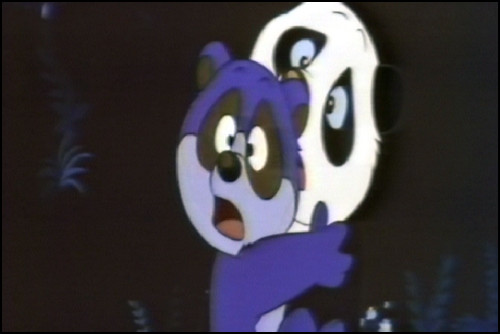
When we jump in the ol’ time machine and hop forward to 1973, the anime landscape is already much more mature, with TV shows, movies, and specials galore. ‘73 got off to a good start with Toei's Babel II, an adaptation of Mitsuteru Yokoyama's manga hit about a young boy, scion of a lost, alien civilization, and how he uses his psychic powers to scream people to death. ‘73 also gave us Panda! Go, Panda!, Miyazaki and Takahata's cute pair of movie specials about a little girl and her panda buddies, which is now back in print thanks to Discotek. Pandas were actually a big deal in Japan back then-- the Tokyo zoo had just gotten a new pair, so the nation got a little Panda Fever. Along with Panda! Go, Panda!, there was also Panda's Great Adventure, a 60-minute movie from Toei, featuring animation by the great Yasuji Mori. That one got dubbed in English back in the day, but it doesn't hold up quite as well as Panda! Go, Panda!.
1973 was a rough year for Mushi Production, Osamu Tezuka's legendary animation studio. Already faced with money troubles courtesy of ambitious fare like Cleopatra, the studio would hit the wall with the dreamlike, psychedelic, and nearly unwatchable Belladonna of Sorrow. That film is wonderfully interesting to watch nowadays, with rich historical context behind it, but nobody could bear the damn thing when it came out. ‘73 saw the debut of Wansa-kun, one of the properties famously pilfered from Mushi by departing office manager and producer Yoshinobu Nishizaki, who took Tezuka's creation for himself by filling out the paperwork a bit creatively. (Nish's break with Mushi is a legend unto itself-- reportedly, when layoffs started hitting, he and his people carried desks and supplies right out of Mushi's offices and down the street to his new company.) By the end of the year, the frustrated Tezuka had sold his bankrupt studio and created Microid S for Toei. Fortunately for us all, the God of Manga bounced back in just a few years.
1973 was rounded out by Cutey Honey, and Aim for the Ace!, and Dororon Enma-kun. In theatres, there was Mazinger Z Vs. Devilman, a grudge match and team-up for the ages. There was a show called Rocky Chuck, based on Thornton Burgess's Fables of the Green Forest-- 25 years later, a pop duo would adopt the moniker ROCKY CHACK, which I guess makes them a Japanese equivalent to our BELLE & Sebastian. Tatsunoko had their Android Casshan, and a hole-in-the-wall studio called Knack created Charge Man Ken. Ken's got to be the most unlikely success story in this entire column-- forgotten for decades, the torturously dumb, badly-animated series got a new lease on life when it came out on DVD several years back. Aficionados of bonkura ( ぼんくら - literally, “dumbass”) culture eagerly hoovered up the series, with its dopey heroes, incomprehensible stories, and ugly animation-- in particular, adorably awful episodes like Dynamite in the Brain!led not just to internet memes and image macros, but to newly issued toys, apparel, and coffee mugs. ‘73 also gave us the adventures of a dumb, unlucky kid and his pal, a blue robot cat from the future, but really, how can Doraemon seriously compare to Charge Man Ken?!

If anime was in full flower in ‘73, it would turn into a goddamn jungle by 1983. ‘83 was littered with awesome TV shows, movies, and a brand new product-- a direct-to-video feature, nominally called an OVA (original video animation). The first ever OVA would come at the end of the year-- entitled Dallos, it was a lavish sci-fi tale by famed director Mamoru Oshii. Sadly, while it frequently looks great and is fairly cool, Dallos was plagued by production and budget problems, and would be quietly shelved before it was even properly finished. Man, that really sets the tone for what OVAs would be like in the coming decades, huh?
On the tube, anime had gotten really wonderfully interesting by 1983. Kids flocked to fare like Aura Battler Dunbine and Captain Tsubasa and Kinnikuman and Creamy Mami, shows that would become standard-bearers for their genres. Before he did Dallos, Mamoru Oshii directed Only You, the first of six Urusei Yatsura movies. Farewell Yamato, the final Yamato movie (until they made Final Yamato a couple of years later, which was the last Yamato movie until they made Resurrection a few years back) also screened for movie audiences, as did Rintarō's beautiful and fabulously weird Harmagedon, Osamu Dezaki's hard-boiled The Professional: Golgo 13, and Moribi Murano's enthralling and slightly nightmarish Unico in the Island of Magic. But for me, two movies really stand out in 1983. One of them is Crusher Joe; the other one is Noel's Fantastic Trip.
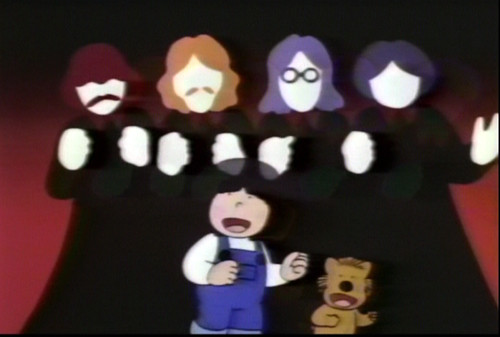
Alright, it's kind of unfair to rate Noel's Fantastic Trip as highly as stuff by the likes of Rintarō and Yoshikazu Yasuhiko. It's a dumb little kids’ movie. But it's a dumb little kids’ movie with surprise cameos by the Space Battleship Yamato itself, not to mention The Beatles and their yellow submarine. It's a dumb little kids’ movie that came to life as a vanity project of folk/pop singer Iruka; she'd been extremely popular throughout the 70s, and had written a kids’ storybook called Noel's Blue Umbrella in ‘77. That book was the basis for this movie, a whimsical tale of the titular Noel and her puppy on a trip to give the sun some ice cream, battling a scary smog monster on the way. Iruka provided all the tunes for the movie, voiced Noel herself, and handed the role of the dog Pup to her 4-year-old son. Noel's Fantastic Trip isn't my favorite anime from 1983, but I'm glad that stuff like it exists.
Crusher Joe, on the other hand, is my favorite anime from 1983! It is one of the ultimate kinds of movie-- a big, broad, sci-fi action/adventure story, only one that was driven not by a production committee, but by auteur artist/director Yoshikazu Yasuhiko. Many fans know YAS's work as a character designer from fare like Ideon and Gundam, but outside of the realm of large-scale commercial TV animation, he was a driven creator who usually took on multiple roles in production. Crusher Joe was based on a series of popular books by author Haruka Takachiho, but for the film, YAS served as director, storyboard artist, character designer, key animator, and also worked with Takachiho to write the screenplay. Mecha design wasn't his bag, so he passed that job to a jug-eared kid named Shōji Kawamori. Crusher Joe is informed by the success of fare like Star Wars-- it has fabulous space battles and lasers, plus a grand orchestral score, but its characters, a tight-knit band of professional mercs and problem-solvers, are a breed apart. The film is wonderful and fun to watch throughout, so it should come as no surprise that it's been out of print for years and is a huge pain in the ass to find and watch.
Beyond that, mecha ruled ‘83 with a literal iron fist. We had Albegas, Sasuraiger, Orguss, Dougram, Govarian, VIFAM, Mospeada, and Dorvack, not to mention a weird little gritty action show called Armored Trooper Votoms. I love mecha anime and have seen many of these shows, and it's a tough to pick a favorite. The victor's probably got to be VOTOMS, which has led to a series of sequels and spinoffs that still continue today. I dig its workmanlike robots and dour protagonist-- Chirico Cuvie, after all, has tasted the tea of Sakuragaoka School's light music club... and found it bitter, indeed!
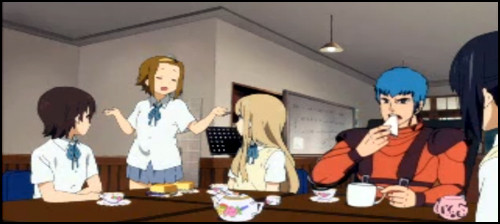
What did we get in 1993, aside from Bill Clinton in the White House? We got Robot Hunter Casshan, and 8th Man After, and we got Orguss 02. Hang on a minute, those sound familiar. Yeah, the 1990s was when we'd really start to see the first waves of sequels and remakes to beloved older shows start to appear. Just a year prior there'd been reduxes of stuff like Babel II and Tekkaman, so it stood to reason that the trend would continue. I think my favorite of this particular wave of spinoffs is 8th Man After. Orguss 02 is something of a sequel to the original, but 8th Man After tries to sell itself as a direct sequel to the 1963 series, even it was, you know, from thirty years prior. Weirdly, 8th Man's lonely girlfriend Sachiko doesn't seem all that much older. 8th Man After also features an appearance by an American football team called the Black Fighters, a bit that's bound to generate uncomfortable laughter wherever you show it.
1993 also gave us plenty of the decade's best anime-- Kōichi Mashimo directed what is probably still his finest work, the Irresponsible Captain Tylor TV series. Animator Takayuki Gotō shaped Saki Hiwatari's famous Please Save My Earth manga into a fine OVA adaptation, featuring some songs from a young composer named Yōko Kanno. The aforementioned Oshii was at it again with arguably his finest film, Patlabor 2. Just as Captain Tsubasa had redefined sports anime a decade earlier, Slam Dunk would reshape it yet again in ‘93. Yoshiyuki Tomino directed V Gundam, a series where lots and lots of characters die. On the OVA front, we had stinkers like Art of Fighting, but also future classics, like Battle Angel Alita and Dragon Half. I think my favorite OVA of 1993, however, is Oh! My Goddess.

Kōsuke Fujishima's still-ongoing franchise is perhaps now better-known as Ah! My Goddess (the subsequent movie and TV adaptations use that English-language name, instead), but it was a hot ticket in ‘93, a lavishly-animated 5-part series that was quickly snapped up for US release by AnimEigo. In Japan, Oh! My Goddess took the already well-known seiyuu Kikuko Inoue, who voiced the effervescently pretty title character Belldandy, and made her stratospherically popular-- even today, at age 48, she remains a favorite. While O!MG was a particularly well-realized blueprint for the harem genre (take one nice but fairly quiet protagonist and surround him with lots of pretty girls, plus one main girlfriend), it's still a fun and Funny Love story. O!MG was directed by a guy named Hiroaki Gohda, and I wanted to mention him specifically, because the guy's actually a pretty important figure in anime. He was on staff in a huge portion of great 80s anime, fare like Bubblegum Crisis, Macross: DYRL, Dirty Pair: Project Eden, and Project-Ako-- he did a lot of key animation and correction: high-detail, repetitive work that was tough to get through, but produced some of the best-looking sequences. He wasn't quite as prolific through the 90s, but Oh! My Goddess was his directorial debut, and he's still the steward of the franchise in its animated form, serving as director for the movie, two TV series, and recent TV special and OVA.
What else stood out in 1993? Well, there was Coo. Coo is one of those things that only me and Justin Sevakisknow about, a big-budget movie based on a popular, accessible children's book. It's got a family-friendly environmental message, a plucky kid and his cute dinosaur pal, and a theme tune by Julian Lennon, whose name might have still evoked a glimmer of recognition in 1993. It's kind of a weird project, but you'd think that something like this might have led to an English dub-- but there ain't one. In fact, Coo never even came out on DVD in Japan, bringing it to rest in the same weird pile of decent-but-forgotten anime family movies like Masami Hata's Elmer's Adventure: My Father's Dragon. Here in the ‘states, we're also still waiting for a DVD release of Studio Ghibli's Ocean Waves, an artful, wistful little TV movie about kids in high school that first aired in 1993. It's directed by Tomomi Mochizuki, a man who specializes in turning natsukashii, that sweet nostalgia for a time that may not have existed, into a physical thing that you can watch on your television. I hope we get a video release eventually, because I'm starting to feel natsukashii for the one time I saw it at a film festival, years ago.
Alright, 2003. Here's a list of things that came out in 2003. The Big-O series 2, .hack//Legend of the Twilight, Licensed by Royalty, Someday's Dreamers, Nanaka 6/17, Stratos 4, Wolf's Rain, Early Reins, Gunparade March, Di Gi Charat Nyo, Munto, Angel Tails, Air Master, Astro Boy, Wandaba Style, Hoop Dreams, E’s Otherwise, D.N.Angel, Gad Guard, Ninja Scroll TV, Kaleido Star, Kino's Journey, Zatch Bell, Last Exile, Loki Ragnarok, Scrapped Princess, Sonic X, Texhnolyze, Stellvia, Divergence Eve, Green Green, Happy Lesson Advance, Ikki Tousen, Narutaru, Please Twins, Popotan, Dokkoida?!, Rumiko Takahashi Theatre, SD Gundam Force, Fullmetal Panic? Fumoffu, Submarine 707R, Ai Yori Aoshi ~Enishi~, Avenger, F-Zero, Gilgamesh, Bottle Fairy, Galaxy Railways, Gungrave, Gunslinger Girl, Fullmetal Alchemist, Maburaho, Papuwa, Peacemaker Kurogane, Planetes, R.O.D -The TV-, Saiyuki Reload, Cromartie High School, Tsukihime, Godannar, Bo-bo-bo-bo Bo-bo-bo, Chrono Crusade, and Tokyo Godfathers.

Every single one of these came out in DVD in North America. This isn't every single anime that came out in Japan in that year, but it's a large, large majority of it. So yeah, 2003 was the absolute apex of the anime boom. I started writing this piece because of this phenomenon, actually; a couple of weeks ago, Crunchyroll had a special sale on a 30-disc “blind box” of mystery anime DVDs for $22. I knew most of these would be crap, but I threw in anyway, because grab bags are fun! When my box of crap arrived and I compared it with other people's booty on twitter, it hit me that seemingly every box had a disc from Gad Guard, or L/R. or Texhnolyze, or Stellvia, or R.O.D -The TV-. And yeah, pretty much every single box had Submarine 707R, because that dog was a hard sell back in the day. So it was that window-- probably, it worked out to 2003-2005-- that saw the most commercial anime DVDs released on these shores. Ten years on, we're still swimming in DVDs, but the tide has thankfully receded a bit. Because seriously, did anyone want Wandaba Style and Green Green?!
To me, one of 2003's key titles is Munto. Munto seemed pretty low-key when it came out-- it was a very, very pretty one-shot OVA with a hard-to-follow story about a girl going to an alternate world. A year later, we'd get the DVD, and I distinctly recall Central Park Media executive Stephanie Shalofsky, in an email, glibly describing Munto's production house Kyoto Animation as a “mom n’ pop studio.” It's hilarious to hear that now, but Munto was indeed KyoAni's first top-line project, an affair that they produced all by themselves. (They'd been around for quite some time by 2003, but were always a second unit for someone else's projects.) Someone must've been impressed by Munto, though, because KyoAni would make headlines later in the year, when they managed to snatch the prized Fullmetal Panic franchise out of the jaws of the ailing, stretched-too-thin Gonzo, delivering the brightly comical Fullmetal Panic? Fumoffu at the end of the year. Just a decade later, almost every single Kyoto Animation series is a target of interest, speculation, and eventual delight on the part of fans.
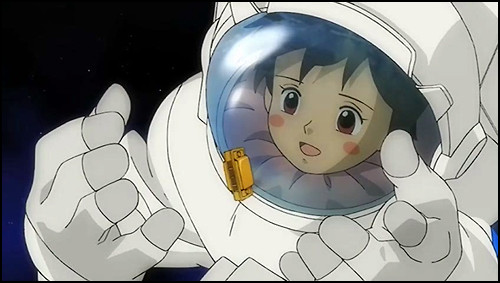
Almost every 2003 anime got some sort of commercial release, but you know what didn't? Twin Spica. Despite being based on a very popular manga, despite being animated by the great (and sadly, now defunct) Group TAC, despite being directed by the talented and aforementioned Tomomoi Mochizuki, the series just couldn't get any traction amongst the waves of higher-energy mecha shows and harem comedies. This bums me out a bit-- while it's necessarily not going to be as complete as the manga, which didn't even finish until 2009, the few episodes I saw (in English, no less-- there's an Animax Asia dub!) looked pretty good to me. Fortunately, we've at least got Koh Yaginuma's original manga from Vertical, which plays like a kinder, sweeter high-school-age version of the same material from Planetes-- which, interestingly, hit the airwaves the same year. Get that Twin Spica manga now, kids, because it's going out of print!
I'll close this jaunt through space and time by sharing a few thoughts on Wolf's Rain. See, after Cowboy Bebop, pretty much everyone was waiting around to see what BONES would come up with next. Well, what BONES came up with next was actually Clockwork Fighters and a couple of other shows, but animation fans were hoping to see the Cowboy Bebop team-- director Shinichirō Watanabe, character designer Toshihiro Kawamoto, music director Yōko Kanno, and the platoon of scribes helmed by the likes of Keiko Nobumoto and Dai Satō-- back in action. Much of the band got back together for Wolf's Rain (the rest would show up instead for manglobe's Samurai Champloo the following year), so it was hotly anticipated. For the most part, Wolf's Rain delivers - it's beautiful to look at throughout, a story full of mystery in a strange, bleak world. I love the way it takes chances - instead of typical heroes, Wolf's Rain is populated with a divorced couple, a bitter old hunter, and an actual pack of wolves. Even putting aside the huge cluster of recap episodes (created under duress, as half the damn country was shut down from the bird flu scare), it's a quality series. But dammit, I can't help but look at this fight scene and mentally dub in my own music!
Before I make like a tree and get the heck outta here, let me throw you a few notes about some other stuff I've been working on. Since we're at the 50th anniversary of TV anime, my good friend and colleague Geoffrey Tebbetts has been working with a huge mob of journalists, bloggers, critics, and fans to shine the spotlight on every single year of Japanese animation in a project entitled The Golden Ani-Versary of Anime. My entry, focusing on the future year of 1975, was posted a couple of weeks back, so please check it outif you want to read more about Grendizer than any person should. Convention season is also upon us, and I'm booked to the nines and tens this year-- along with my regular stomping grounds of Otakon and Anime Boston, I'll be speaking at Sakuracon in just a month. My friends at Anime Next are doing me a rare honor by making me a guest of the con, so look for me there! Finally, I'll be hitting my first-ever Anime Expo in July. For details on what panels I'll be doing and when, keep an eye on my twitter account (@michaeltoole), homies.
So, what did you think of this week's magical journey? Disappointed I didn't talk up the original Fullmetal Alchemist, which hit in October of 2003? How much has anime changed in the past ten years, anyway? Is gdgd Fairies better than Gungrave? Let me know your thoughts in the comments!
discuss this in the forum (54 posts) |